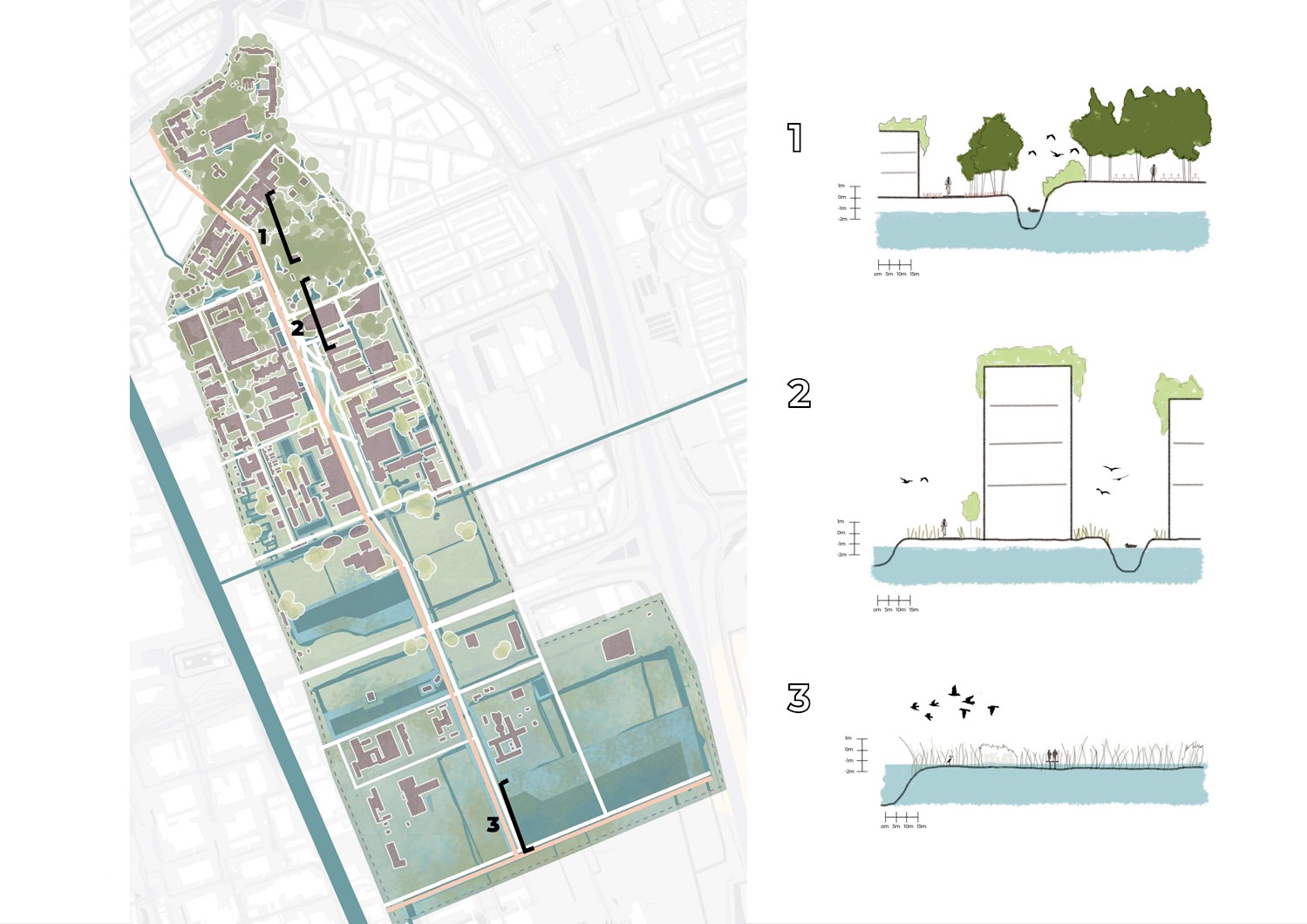
Nature First
On one hand, our vision is to slow down the pump speed, storing water in the campus, which means that there will be more wetland and swamp on the campus. We follow the gradient from dry to wet, creating there main biotopes- forest-meadow-swamp.
Forest: the northern area is kept dry by carrying off the water quickly, here a more bushy vegetation of trees and shrubs can be found. The already mature vegetation of the cemetery will form the base for this biotope, home to various forest birds.
Meadow: with less maintenance the middle part can develop in a rough meadow with wildflowers and herbs. Creating more beneficial habits for insects like bees and butterflies.
Swamp: with a higher water table a peat swamp biotope can develop. Aquatic plants like reed and cattail can grow here, which forms the habitat for marsh birds like the bittern and heron.
As we increase the retention time of water in the campus, more possibilities also emerge. The water flow is no longer linear, but circular. Rainwater flows from all directions to the swamp, which can be both purified and stored. The water can provide habitat for wild animals and plants, and can also be reused.
On the other, eco-campus is still a campus, which needs to function for human. Connectivity between buildings is required and on the conceptual map you see the cycling paths, sidewalks and tramlines system. To limit human intervention, we leave only the least paths which serve for the connectivity between buildings’ entrances, which are necessary for basic function of the campus, and cover other areas with nature layer. Also, mostly used buildings are connected by direct straight path. Besides, to reach the goal of ‘car-free Campus’, several parking lots are set at the entrance of campus.
STUDENTS
Kailun Qi
Emmanouela Armoutaki
Yu Zheng
Anouk Sanders
Jelle Dekker
